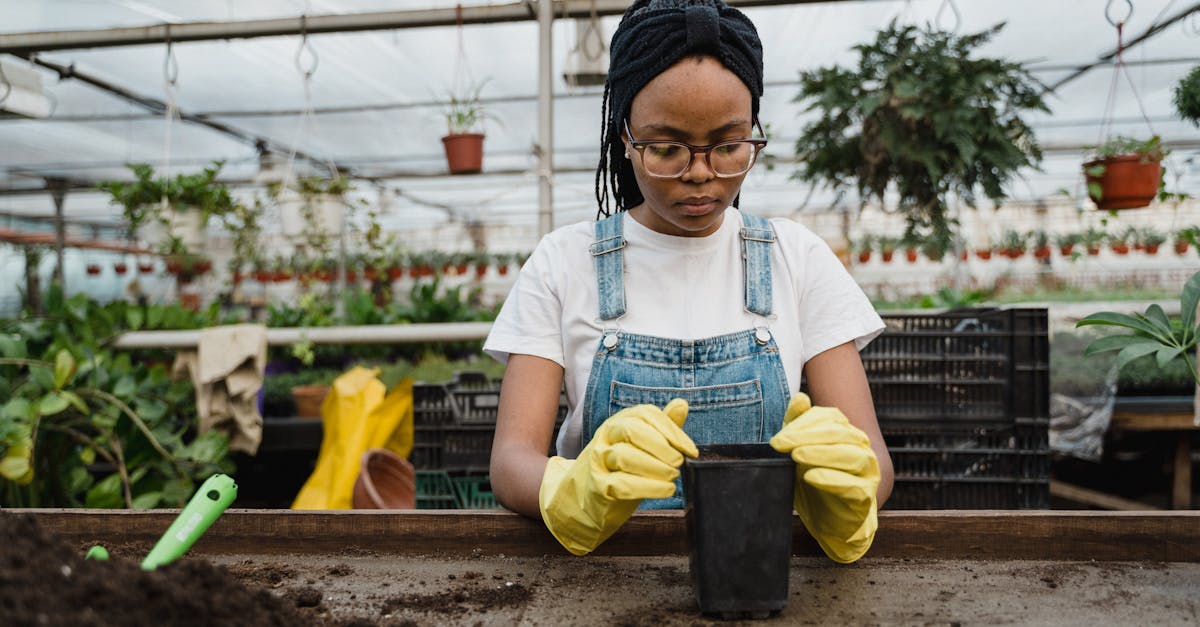Have you ever felt the sting of thorny branches or the grit of soil digging into your skin while tending your garden? I’ve been there too, and that’s why finding the right pair of affordable work gloves changed my gardening game completely. It’s not just about protection—it’s about comfort, dexterity, and making every planting session a joy instead of a chore.
In this text, I’ll share how you can get durable, budget-friendly gloves that don’t skimp on quality. Whether you’re a weekend warrior or a green thumb pro, the right gloves can transform your gardening experience without very costly. Let’s dig in and uncover the best options that combine value and performance.
Features of Affordable Work Gloves for Gardening
Affordable work gloves for gardening pack plenty of punch without emptying your wallet. Here’s a closer look at what makes a good pair stand out in everyday gardening tasks.
Material and Durability
The materials used in these gloves matter big time. Most affordable options come in synthetic blends like nylon or polyester mixed with rubber or latex coatings on the palms and fingers. These combos offer solid resistance against thorns, dirt, and moisture, which keeps your hands safe and the gloves lasting longer.
Here’s the kicker: Some gloves use nitrile coatings, which are excellent for grip and tear resistance without driving up the cost too much. I’ve found that gloves with reinforced fingertips stretch their lifespan since those spots take the most wear and tear.
Quick tip: Look for gloves with double-stitched seams; it’s a simple sign they won’t fall apart after a handful of weekend gardening sessions.
Comfort and Fit
If gloves feel like a straitjacket you won’t want to wear them more than a few minutes. That’s why comfort and fit should be top of your checklist.
Affordable gloves often include elastic wristbands or adjustable straps to keep dirt out but not pinch circulation. Stretchy fabrics give you a glove that moves with your hand—no clunky bulk that slows down your pruning or planting.
From my experience, sizing matters more than you’d guess. Getting gloves that fit snugly but don’t squeeze lets me dig and snip all afternoon without numbness or awkward fumbling.
Pro tip: Try gloves on if possible or check size charts closely; a good fit beats any fancy material any day.
Grip and Dexterity
Gardening demands a lot of finger control, from handling delicate seedlings to twisting stubborn weeds. Gloves that offer good grip and dexterity are worth their weight in dirt.
Latex and nitrile-coated palms shine here by giving a reliable, slip-free hold even when things get damp or muddy. Thin but tough fabrics let your fingertips “feel” what you’re touching so you’re not fumbling around like a fish out of water.
I keep a pair of gloves with textured palms for heavy-duty tasks. For lighter, more detailed work, I stash thinner options nearby to keep my fingers nimble.
Remember: Gloves that block too much finger movement can be as annoying as having no gloves at all.
Breathability and Protection
Gardening can get sweaty, especially when the sun’s blazing or you’re working hard. Breathable gloves wick away some moisture making a huge difference in comfort.
Look for gloves with mesh backs or breathable fabrics that keep your hands cool while still offering protection from scrapes, cuts, and insect bites. Some gloves also have cushioned palms or padding which helps if you’re using tools that vibrate a lot.
In my yard, gloves that combine breathability with solid protection make long gardening sessions less of a chore. It’s like having a shield that breathes along with you.
Quick takeaways for picking your gloves:
- Pick materials that balance toughness with comfort (nitrile is a good middle ground).
- Don’t underestimate a good fit with stretchy fabric and wrist closures.
- Think about the grip you need—textured coatings can boost hold on slippery stuff.
- Choose breathable gloves, especially if you garden in warm weather, to avoid clammy hands.
Finding gloves that tick these boxes means less hand fatigue, fewer injuries, and more time enjoying your garden—not battling your gear.
Performance and User Experience
Picking affordable gardening gloves is just the start – how they perform during real tasks and hold up over time makes all the difference. Here’s my take on handling everyday garden chores, cleaning ease, and whether these gloves stick with you for the long run.
Handling Different Garden Tasks
Gardening throws plenty of curveballs – digging, pruning, planting, and sometimes dealing with prickly plants or damp soil. I’ve found that gloves with a snug fit and flexible materials make all the hard work feel lighter. For example, gloves with a nitrile-coated palm grip well on wet roots and slippery stems, helping me keep control without sacrificing comfort or finger movement.
Thicker gloves are great for thorny tasks or moving rocks, but if you’re trimming flowers or working with tiny seeds, thinner, breathable gloves keep that delicate touch without feeling clunky. Bonus: elastic wristbands that don’t cut off circulation (been there, done that) keep gloves secure without watering down circulation.
Quick bullet points for tough spots:
- Use textured rubber coatings for solid grip
- Opt for stretchy backs to flex with bending fingers
- Choose reinforced fingertips to fend off rough edges or thorns
Ease of Cleaning and Maintenance
Gardening gloves inevitably get filthy (dirt under nails happens to the best of us). With affordable gloves, I look for pairs that aren’t a pain to clean – because let’s face it, who wants to handwash all day? Most options work well with a quick rinse under running water or a gentle machine wash on a cool cycle. Breathable fabrics dry pretty fast too, letting me toss them back on sooner rather than later.
Some gloves start to lose shape or colour after multiple washes, so I usually check reviews or look for brands claiming quick-dry or stain resistance. It’s a small win saving time and hassle when I’m eager to get back outside.
My personal cleaning tip: turn gloves inside out before washing to get deeper dirt spots and avoid coating damage. Plus, hang dry instead of using a dryer to keep elastic parts from stretching out.
Long-Term Usability
I want gloves that go the distance without turning into shredded gloves after a few uses. Affordable doesn’t have to mean disposable if you pick the right materials. Synthetic blends with reinforced palms have held up surprisingly well through months of weekend gardening and plenty of rainy days.
After about three seasons, some gloves start to show wear on fingertips or loose stitching around the wrists. But honestly, when a pair lasts one full season of regular use, that feels like excellent value to me. When you compare cost per wear, spending a little more upfront on gloves that resist tears and maintain shape makes budget sense.
Here’s a quick look at the durability trade-offs:
| Glove Type | Durability | Typical Price Range | Best For |
|---|---|---|---|
| Synthetic blend with nitrile | High | $10 – $15 | Wet, thorny tasks |
| Cotton or lightweight fabric | Moderate | $5 – $10 | Light planting, seeding |
| Leather or heavy duty | Very High | $20+ | Rough soils, heavy lifting |
For casual gardeners like me, balancing cost and toughness is key – I want gloves that protect enough without feeling like a one-and-done. A little care with cleaning and storage goes a long way toward extending their life.
If you’re like me and spend more time outside than inside, these practical points simplify your glove choice without very costly or leaving you stuck with uncomfortable gear that you dread slipping on.
Pros of Affordable Work Gloves for Gardening
Affordable work gloves for gardening have plenty going for them—sometimes more than you’d expect. From my experience, these gloves deliver solid protection without very costly, making them a smart pick for anyone who spends time digging, pruning, or planting.
First off, the price. Let’s face it, you don’t want to spend a fortune on gloves that might wear out before the season ends. Affordable gloves often use materials like synthetic blends or coated fabrics that resist thorns and dirt surprisingly well. In fact, many budget gloves feature a nitrile or latex coating on the palms and fingers which boosts grip and tear resistance. This means I can handle thorny rose bushes or slippery garden tools without worrying about losing control—or my skin.
Comfort is another win here. I’ve found that affordable gloves usually come with stretchy fabrics and elastic wristbands. That snug fit prevents dirt from sneaking in and keeps your hands feeling comfortable even on hot days. Breathability isn’t sacrificed either; many models incorporate mesh or moisture-wicking materials, which means less sweaty hands and more time working happily in the garden.
Durability surprises me the most considering the price point. Some of my favorite gloves have lasted through multiple gardening seasons without major damage. Reinforced fingertips save the day when digging into tough soil or tackling rough bark. Plus, many affordable options clean up quickly—just a rinse or a quick machine wash, and they’re good to go.
Here’s a quick snapshot of what affordable gardening gloves bring to the table:
| Benefit | What It Means for You |
|---|---|
| Cost-effective | Great protection that’s easy on your wallet |
| Reliable grip | Safer handling of tools and plants |
| Comfortable fit | Less hand fatigue during longer sessions |
| Breathable materials | Cooler, drier hands while you work |
| Durable construction | Gloves that last through several seasons |
| Easy maintenance | Simple cleaning to keep gloves fresh |
If you’re like me and juggling various tasks—digging in dirt, snipping branches, or planting delicate seedlings—affordable gloves manage a solid balance of protection and flexibility. They might not have every high-end feature, but their performance keeps your hands safe and hands-on time enjoyable.
Plus, since they’re budget-friendly, I’m okay swapping them out when they finally run their course—without feeling like I wasted money. On top of that, many brands offer styles and sizes to fit both small and large hands, so everyone can find a pair that feels just right.
Overall, affordable work gloves for gardening are a reliable sidekick that helps me avoid cuts, blisters, and dirt, all while staying comfortable and keeping costs in check. Whether you’re a weekend gardener or someone who tends to the backyard daily, these gloves make the work a little easier and the results much cleaner.
Cons of Affordable Work Gloves for Gardening
Affordable work gloves for gardening do a solid job most of the time, but they do come with a few trade-offs you should keep on your radar before tossing them into your garden kit.
Less Padding and Protection
One thing I’ve noticed with cheaper gloves is that they often skimp on padding. This can mean less cushion when you’re digging around tough soil or wrestling with thorny bushes. I remember trying a pair during a rose pruning session—the gloves kept my hands clean but left a few small scratches I didn’t expect. So, if your garden tasks involve thorny or sharp materials, these gloves might not fully protect against every prick or scrape.
Durability Can Vary
Affordable gloves typically use thinner materials to keep costs down. That means they can wear out faster, especially if you’re using them daily. For example, I put a pair to the test over a few weekends and noticed the fingertips fraying after heavy use. Still, some brands hold up better than others, so it’s worthwhile to read user reviews or try different ones before settling on a favorite.
Fit Might Not Be Perfect
Finding gloves that fit just right without very costly can be a bit of a guessing game. Some budget gloves come in standard sizes that don’t offer much stretch or adjustability, which can feel too tight or loose. I’ve found gloves with elastic wrists helpful, but some cheaper options miss this detail, leading to dirt sneaking inside. If you want something snug that moves with your hand, you might need to spend a little extra or accept minor fit compromises.
Breathability Often Lacks
When temperatures climb, I want my gloves to breathe so my hands don’t feel like they’re in a sauna (because gardening is hard enough without sweaty hands). Many affordable gloves use synthetic materials that can trap heat and moisture, making long gardening sessions less comfortable. Look for options advertising mesh panels or moisture-wicking fabric if you often work in the heat.
Limited Specialty Features
High-end gloves sometimes offer features like reinforced fingertips, touchscreen compatibility, or even water resistance. Affordable options rarely include these extras. If you need something specific like waterproof gloves for wet soil or gloves with extra grip for slippery tools, budget gloves might fall short. That said, they cover the basics well enough for standard gardening chores.
Quick Tips to Manage These Cons:
- Swap gloves often to avoid excessive wear, especially if you notice thinning material.
- Pair budget gloves with finger protectors for thorny tasks or consider double gloving.
- Pick gloves with elastic or adjustable cuffs to keep dirt out.
- Shop for gloves with breathable fabrics if you work in hot weather.
While affordable work gloves won’t feel like a luxury spa treatment for your hands, they can get the job done without draining your wallet. Being aware of their limits helps keep your hands safe and comfortable throughout your gardening adventures.
Comparison to Other Gardening Gloves
Choosing the right gardening gloves means weighing your options against different price points and features. Let me walk you through how affordable gloves stack up against mid-range and premium ones so you can spot the best fit for your daily gardening tasks.
Mid-Range Gardening Gloves
Mid-range gardening gloves usually cost a bit more but bring some nice upgrades. For around $15-$25, you often get thicker materials with extra cushioning and reinforced fingertips. They tend to offer better resistance to thorns and rough soil, which is handy for tougher jobs like pruning roses or handling rough mulch.
I’ve found that these gloves often come with more adjustable wrist closures—Velcro straps that keep dirt and bugs out far better than the simple elastic on cheaper pairs. The fabrics also lean more toward breathable but durable synthetic blends. For example, some brands use nitrile palms that grip wet tools well without sacrificing flexibility.
That said, mid-range gloves can sometimes feel bulkier. If your priority is precise tasks like seed planting or delicate pruning, you might notice they reduce finger sensitivity a bit. Still, if you want a balance between comfort and protection for regular yard work, mid-range models are a solid pick.
Premium Gardening Gloves
Premium gloves—usually $30 and up—step up the game with specialized materials and design. They often sport genuine leather or high-grade synthetic materials that conform snugly to your hand. Many feature reinforced padding, impact protection, and waterproofing that’s really effective in muddy or wet conditions.
I got my hands on a pair of premium gloves with touchscreen-compatible fingertips. Strange as it sounds, that feature came in handy when I needed to check a gardening app without peeling off my gloves mid-task! Plus, premium gloves often offer ergonomic designs that reduce hand fatigue over long periods, which feel like a real blessing if you’re tackling larger projects.
The thing is, while premium gloves pack a punch on protection and durability, they can be overkill for everyday gardeners. Plus, their care instructions tend to be pickier—you might need to hand wash or apply conditioners if leather is involved. So, they’re fantastic but more of an investment for committed hobbyists or pros.
Budget vs. Value Analysis
Here’s where things get practical—the real question: Are affordable gloves worth it? From my experience, yes, especially if you’re mindful about what tasks you throw at them and how you care for them.
| Feature | Affordable Gloves | Mid-Range Gloves | Premium Gloves |
|---|---|---|---|
| Price Range | $5 – $15 | $15 – $25 | $30+ |
| Durability | Moderate; wears with heavy use | Good; reinforced tips and fabric | Excellent; premium materials and design |
| Comfort/Fit | Basic stretch and elastic | Better fit with adjustability | Snug, ergonomic, premium fabrics |
| Grip | Functional with rubber or latex coating | Enhanced grip with nitrile or textured palms | Superior grip, often specialized coatings |
| Breathability | Variable; synthetic blends | Generally breathable and moisture-wicking | High-performance breathable fabrics |
| Specialty Features | Few to none | Some padding, adjustable wristbands | Impact protection, touchscreen compatibility |
| Maintenance | Machine washable or simple rinsing | Usually machine washable | Often needs special care |
If you garden casually or tackle mostly light tasks like planting or weeding, affordable gloves do the job without bleeding your budget. Keeping them clean and rotating pairs as they wear will help extend their life.
On the flip side, if your garden involves thorny plants, heavy digging, or longer work sessions, stepping up to mid-range or premium gloves can pay off. You get extra comfort and protection that justifies the cost.
Here’s a quick tip I live by: No matter the gloves, giving them a good rinse after each gardening session cuts down on odor and wear. Plus, it keeps your hands happier if you’re prone to skin sensitivity.
So as you weigh your options, think about the tasks you handle most, how long you spend in the garden, and your budget. That way you pick gloves that fit right into your routine—because protective gear should feel like a natural extension of your hands, not a hassle.
Testing and Hands-On Experience
Trying out affordable work gloves for gardening is where theory meets reality. I put several gloves through their paces to see how they perform in everyday garden tasks.
Real-World Gardening Scenarios
I took these gloves outdoors to tackle common chores like digging, pruning, planting, and weeding. Here’s what stood out:
- Digging: Gloves with textured rubber palms gave me confident grip on shovels and trowels. They kept slipping at first but once wet with a little dirt, they gripped better.
- Pruning: Flexible gloves made it easy to snip leaves while keeping prickly stems at bay. Gloves with reinforced fingertips offered extra protection when handling thorny roses.
- Planting: Softer, stretchier gloves helped when seed-starting or handling delicate roots. These gloves felt like a second skin without sacrificing protection.
- Weeding: Breathable gloves kept my hands cool during long sessions. Wearing less bulky gloves also reduced hand fatigue and made pulling weeds more comfortable.
Here’s a quick tip: If you’re switching between heavy-duty and delicate tasks, having two pairs on hand can save frustration and protect your hands better.
Durability Under Stress
Affordable doesn’t always mean cheap in quality. I stressed these gloves with tasks that can wear out material fast—like handling thorny bushes or rough soil. Here’s what I found:
| Glove Feature | Performance in Stress Test |
|---|---|
| Synthetic blend + nitrile | Held up well with minor scuffs, no tears |
| Thin cotton + rubber palm | Showed wear around fingertips after 2 weeks |
| Budget leather gloves | Puncture resistant but stiff after drying |
| Mesh back gloves | Breathable but prone to catching on twigs |
A good glove for tough jobs should balance protection and flexibility. I recommend gloves with reinforced fingertips if thorns and sticks are common. Plus, gloves with nitrile coatings often resist tears while still allowing some stretch.
Comfort Over Extended Use
Comfort is where many gloves falter. I wore gloves for several hours during garden projects to test how hand fatigue, sweat, and fit affected performance. Here’s the scoop:
- Fit Matters: Gloves that fit snugly but aren’t tight kept fingers nimble. Loose gloves can bunch and cause blisters.
- Breathability Counts: Gloves with breathable fabric backs prevented sweaty palms, which made a difference especially on warm days.
- Elastic Wrists: Gloves with stretch bands around wrists stayed put and kept dirt out without feeling restrictive.
- Quick Drying: Gloves that dried fast after getting wet kept me working longer without irritation.
One personal trick: turning gloves inside out after use helps wick moisture and speeds up drying (plus, it saves the outside from dirt buildup).
Next time you shop, keep in mind that comfort affects productivity more than you might expect. Your gloves should feel like a natural extension of your hands, not a hassle to wear.
Key Takeaways
- Affordable gardening gloves offer a great balance of protection, comfort, and durability without breaking the bank.
- Key features to look for include nitrile or latex coatings for grip, reinforced fingertips, breathable fabrics, and adjustable wristbands for a secure fit.
- Proper fit and comfort are crucial to prevent hand fatigue and maintain dexterity during detailed tasks like pruning and seed planting.
- These gloves are easy to clean and maintain, often machine washable, and can last multiple gardening seasons with proper care.
- While affordable gloves may lack some premium features (extra padding, waterproofing), they suffice for most light to moderate gardening chores.
- Choosing the right gloves depends on your specific gardening needs, balancing cost with task requirements for the best value.
Conclusion
Finding the right affordable work gloves for gardening doesn’t have to be complicated. With the right balance of protection, comfort, and durability, you can tackle your garden tasks confidently without overspending.
Choosing gloves that fit well and suit your specific needs makes a noticeable difference in how enjoyable and efficient gardening feels. Whether you’re digging, pruning, or planting, the right gloves can become an essential part of your routine.
Remember, investing time in selecting gloves that match your gardening style ensures your hands stay protected and comfortable season after season.
Frequently Asked Questions
Why are work gloves important for gardening?
Work gloves protect your hands from cuts, blisters, and dirt. They also improve grip and dexterity, making gardening tasks safer and more comfortable.
What features should I look for in affordable gardening gloves?
Look for durability, comfort, good fit, breathability, and grip. Gloves with synthetic blends and rubber or latex coatings offer great protection and flexibility at a budget-friendly price.
Which materials are best for garden gloves?
Synthetic blends with rubber, latex, or nitrile coatings are ideal. These materials resist moisture, punctures, and tears while offering good grip and comfort.
How should gardening gloves fit?
Gloves should fit snugly without feeling tight, allowing good finger movement and flexibility. Elastic wristbands help keep dirt out and improve comfort.
Can affordable gloves last multiple gardening seasons?
Yes, if made from quality materials like reinforced fingertips and durable coatings, budget gloves can last through several seasons with proper care.
How do I clean gardening gloves effectively?
Turn gloves inside out before washing. They can be rinsed by hand or machine washed, drying quickly to prevent odor and wear.
Are affordable gardening gloves suitable for thorny plants?
They offer basic protection, but may lack heavy padding. Use finger protectors or choose gloves with reinforced fingertips for safer handling of thorny plants.
Affordable gloves are great for light to medium tasks. Premium gloves provide extra padding, durability, and specialized features suitable for heavy or prolonged gardening work.
What problems might I face with budget gardening gloves?
Potential issues include less padding, variable durability, imperfect fit, and lower breathability. However, these can be managed with proper glove rotation and task-specific choices.
How can I improve grip and dexterity when gardening?
Choose gloves with textured rubber or nitrile-coated palms. These provide a secure grip and flexible fingers to handle both heavy-duty and delicate tasks efficiently.




